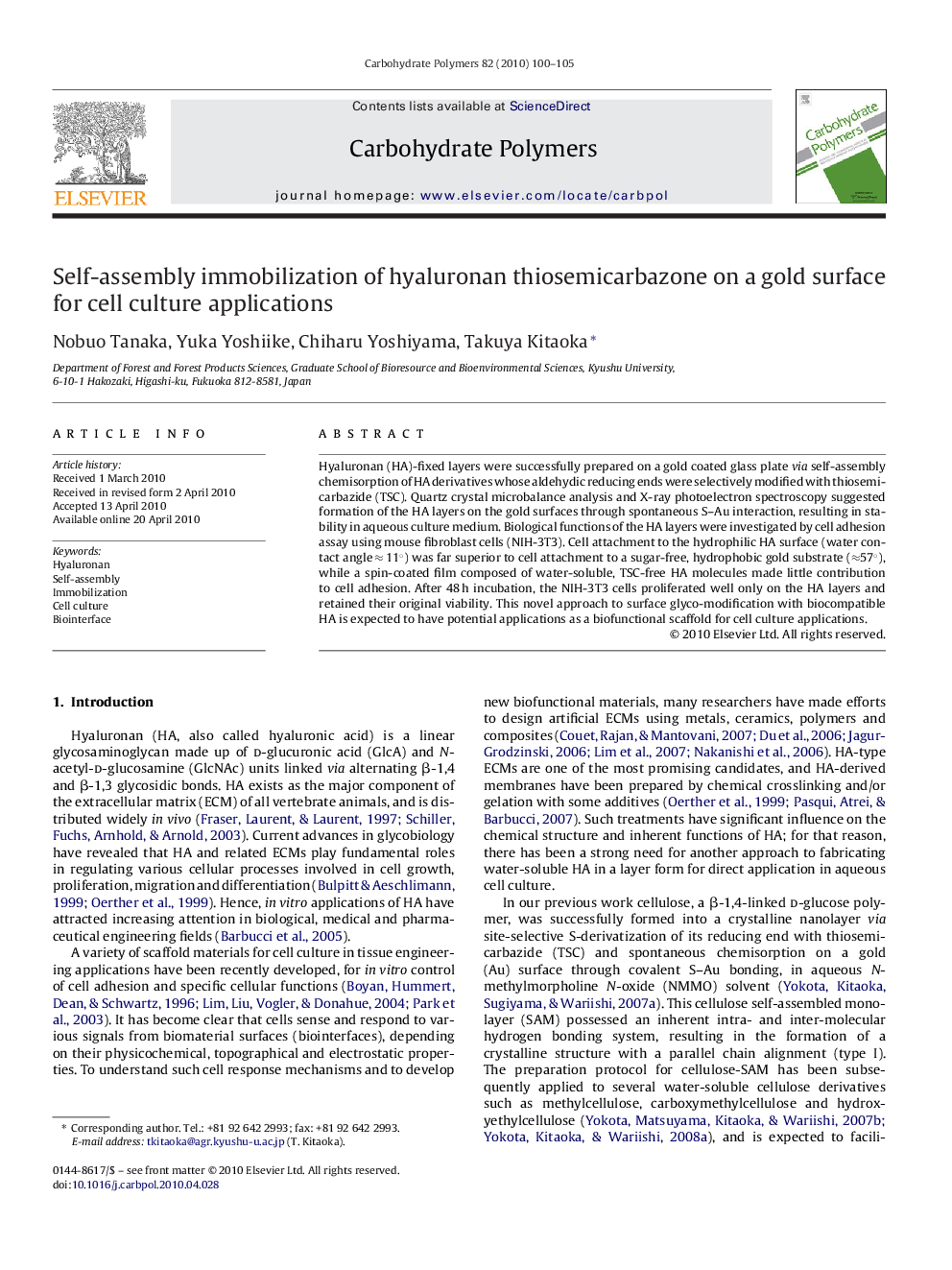| Article ID | Journal | Published Year | Pages | File Type |
|---|---|---|---|---|
| 1387141 | Carbohydrate Polymers | 2010 | 6 Pages |
Hyaluronan (HA)-fixed layers were successfully prepared on a gold coated glass plate via self-assembly chemisorption of HA derivatives whose aldehydic reducing ends were selectively modified with thiosemicarbazide (TSC). Quartz crystal microbalance analysis and X-ray photoelectron spectroscopy suggested formation of the HA layers on the gold surfaces through spontaneous S–Au interaction, resulting in stability in aqueous culture medium. Biological functions of the HA layers were investigated by cell adhesion assay using mouse fibroblast cells (NIH-3T3). Cell attachment to the hydrophilic HA surface (water contact angle ≈ 11°) was far superior to cell attachment to a sugar-free, hydrophobic gold substrate (≈57°), while a spin-coated film composed of water-soluble, TSC-free HA molecules made little contribution to cell adhesion. After 48 h incubation, the NIH-3T3 cells proliferated well only on the HA layers and retained their original viability. This novel approach to surface glyco-modification with biocompatible HA is expected to have potential applications as a biofunctional scaffold for cell culture applications.
